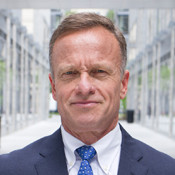At Denver’s National Western Complex, people, mostly over the age of 70, filed in recently to get their first dose of Moderna’s COVID-19 vaccine. For many, it can’t come soon enough.
“I want to see my grandchildren and hug and kiss them and I can’t,” said Ruthie Stoner, one vaccine recipient.
5,000 shots were administered on that day.
“This is our way out of the pandemic is to get everybody vaccinated,” said Dr. J.P. Valin, SCL Health’s Chief Clinical Officer.
The health system held the event specifically for vulnerable populations in communities of color.
“We are more likely to be infected but also more likely to be hospitalized and more likely to die”, said Deidre Johnson, Center for African-American Health C.E.O.
Government statistics show that Blacks and other people of color die from COVID-19 at a rate nearly three times that of Whites. And yet a Kaiser Foundation survey of 23 states reveals Blacks lag well behind the general population in getting the vaccine.
“No one is running towards vaccines,” Johnson said. “We just happen to be a group that has historical reasons for that mistrust.”
The mistrust goes way back. The Tuskegee syphilis experiments and myths like Blacks better tolerate pain have helped fuel African-Americans’ deep unease with the medical profession. Access to medical care is always a major issue and the term for the current vaccine effort, Operation Warp Speed, has also made many vaccine hesitant.
“All that kinds of creates a haze around making this decision, and so we’re working to as they say kind of clear that haze,” Johnson said.
The White House’s COVID-19 Task Force has announced it will begin delivering vaccine doses to federally funded clinics in underserved areas. Community health centers in Texas are inoculating majority minority patient populations right now.
“There are a whole bunch of strategies that we’re going to need to take to be able to reach this community,” Valin said. “There’s not a one size fits all solution for reaching this population.”
SCL recruited patients from more than three dozen organizations for its event, including one that serves the LGBTQ community.
“The last few months have been very difficult for me,” said Ron Zutz, a gay vaccine recipient, speaking of his isolation. “I have never been so excited to have a stranger stick me with a sharp object.”
“Many folks from the LGBTQ community are part of the service industry or retail workers or front-line workers, health care workers,” said Rex Fuller, The Center on Colfax C.E.O.
The same is true of the Black community, contributing to their already above-average medical risk, adding to the urgency of getting doses out, getting grandma back with grandkids and closing the vaccine racial gap.
“I’m just over the moon,” Stoner said. “I’ll be able to hug ’em and kiss ’em. Oh I’m just looking so forward to that.”
 CGTN America
CGTN America
 COVID-19: Addressing vaccine racial disparities
COVID-19: Addressing vaccine racial disparities
